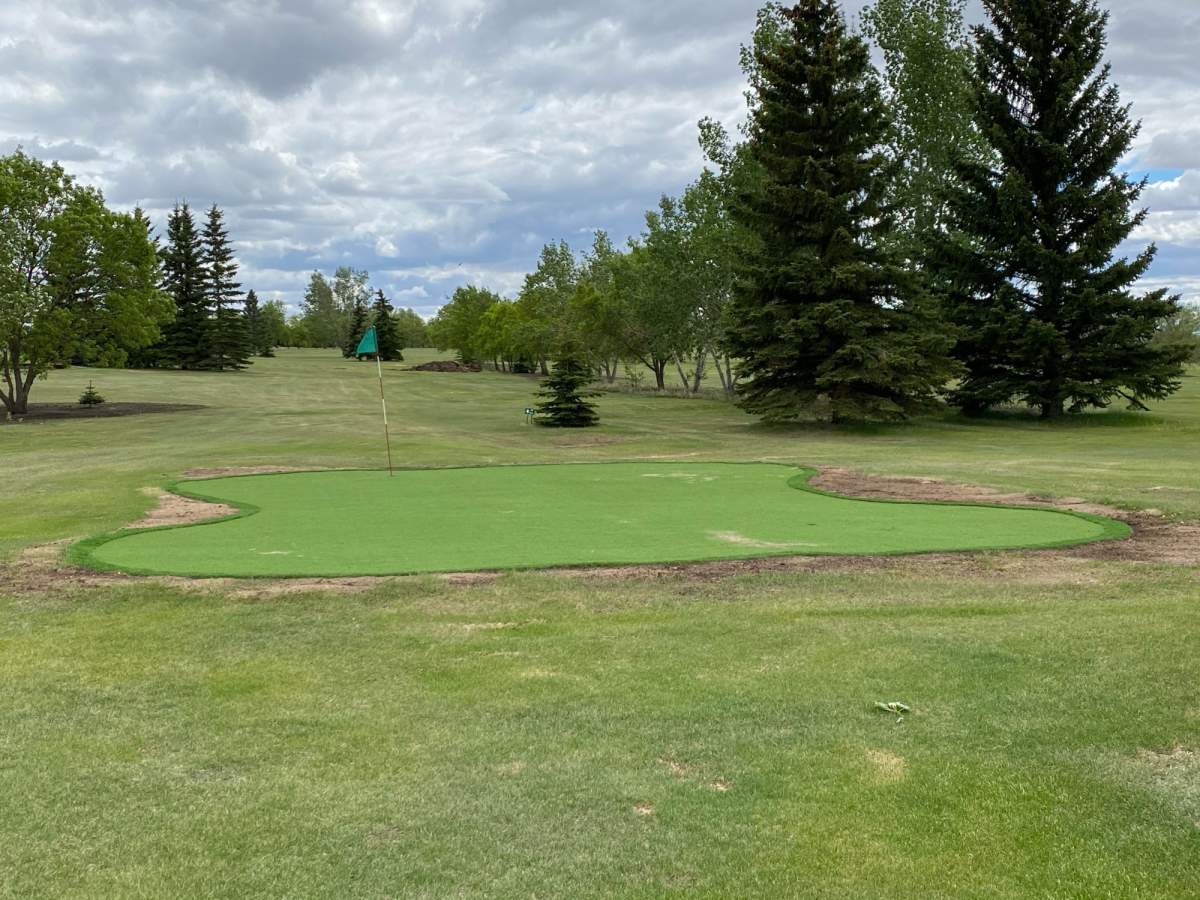Synthetic greens have been a game changer, according to a small-town golf course in Saskatchewan.

The Town of Luseland, located approximately 195 km west of Saskatoon, owns Bell Acres Golf Course.
Club treasurer Ryley Magnus said there are roughly 600 people in the community with a group of volunteers that have looked after the sand greens prior to this season.
“For us in the past, they’ve always continually looked at getting real grass greens in but we’ve got a small course here that’s just a municipal course,” Magnus said.
“Having real greens isn’t something that’s financially feasible to us.
“We decided to get all nine holes done with synthetic greens … We started the project in May and then they wrapped up the project in early June.”
With each green roughly 1,200 square feet, Magnus said it was a $110,000 to $120,000 project to install synthetic turf.
“Most of the time where the course operates at a loss … we do fundraising through our community to keep the course running,” Magnus said.
“Within maybe a month’s time … we had the funding in place even before the construction started.”
Magnus said they’re happy with the change and it’s increased the amount of traffic on the course.

Get breaking National news
“It’s created a lot of local buzz,” he said.
“We’ve got a lot more people locally choosing to golf here in town as opposed to going to another community. We’ve got new golfers who are just taking up golf. We’ve got people from other communities coming here to golf now that haven’t been before.”
For as long as the Bell Acres Golf & Country Club has records, 2021 was its busiest season.
“Typically, we have about 60, 70 members on our golf club here. Those are the people that golf consistently out there. They buy a membership. … This year, we had almost 100,” Magnus said.
“In terms of people just paying green fees, we’re probably up … about 60 per cent, so quite substantially on just walk-ons.
“(It is) $10 per day … on the honour system. We don’t have any attendant working in the clubhouse or anything like that so you just drop your money in the cash box.”

Golf Saskatchewan executive director and CEO Brian Lee believes there are 217 active courses in the province and at least three have synthetic greens.
“Grass seed, water, fertilizer, machinery and person power to maintain them is not inexpensive. And with synthetic … once you’ve put the cost in, you basically have low maintenance,” Lee said.
“The other benefit is, obviously, once you’ve initially paid for them … these (synthetic) greens last normally from 10 years and some will go as high as 15 to 20.
“Do I see some towns doing it? Absolutely. Especially if they’re going to transition from what they currently have being oiled sand greens or a combo thereof. It is definitely something that communities and non-profit golf courses could look at as a viable option.”
From a playability standpoint versus traditional greens, Lee said the challenge for putters remains.
“Usually pretty fast putting offerings (on synthetic) … so you’re going to have a good challenge. Just depends as to how it’s laid out,” Lee said.
“Whether it’s sand green, artificial turf or grass green, it’s still golf so there is no downside as long as you’re enjoying it with family and friends and getting youngsters into the game.”
Magnus said the synthetic greens also extended their season.
“Our neighbouring or other golf courses are starting to shut down now … it’s definitely a whole extra month we do get out of the golf course,” Magnus said.
“People can get out and golf as soon as the snow’s gone and it dries up a little bit. And same thing too on going into the later fall.
“Technically, until the tarps and the fencing is put around the synthetic greens. … We’ll probably do that here at the end of October so the course will be open till whichever happens first.”
For the latest conditions and warnings, download the SkyTracker weather app.






Comments